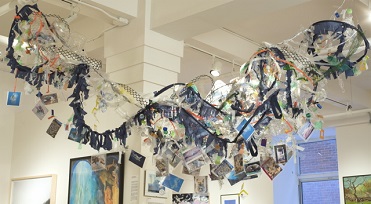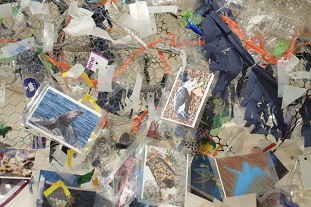
Tonight (Wednesday, July 2) at 6PM, I will be participating in a panel discussion (free but limited seating) about the crisis in the planetary habitat that we depend upon for our health, happiness and security. The event celebrates the halfway mark of a show of 56 works of art at New York’s Atlantic Gallery (135 west 29th, Suite 601), entitled Catostrophe and curated by Pamela Talese.
I’m honored to take part in the discussion alongside:
- Sharon Astyk, subsistence farmer and author whose blog Casaubon’s Book focuses on what ordinary people can do to reduce dependency on fossil fuels, mitigate global warming, create local food systems and enable abundant lifestyles in the face of resource depletion.
- Michael Hogan, an author, screenwriter and painter whose two novels Man Out of Time and Burial of the Dead will be published by St Martins Press in August.
- James Howard Kunstler, author and social critic, whose nonfiction works The Geography of Nowhere and The Long Emergency call attention to the decay of America’s cities and places and to the social, economic and spiritual costs of the car-based lifestyle.
Hope to see you there, but if not, click on the photos above and below to get a more detailed look at a sculpture, by Pamela Talese working under the name Viola Salzedo-Gramm, depicting the huge “garbage patch” that floats in the north Pacific. I’ll leave you with the artist’s statement:
The Plastic Trash Vortex or North Pacific Gyre, the world’s largest floating island of plastic trash, is estimated to be 5 million square miles—larger than the entire United States.
An estimated 80% of marine debris comes from land-based sources, while only 20% comes from sea-based sources, like shipping and boating.
Roughly 60–80% of all marine debris, and 90% of floating debris is plastic. Plastic resin polymers are so durable that it can take hundreds of years for plastics to break down at sea, and some may never truly biodegrade in the marine environment.
Marine life and birds can easily confuse plastic flotsam for food. Ingestion of plastics can reduce the appetite of seabirds and marine life and inhibit nutrient absorption, causing possible death by starvation.
More than 1 million seabirds, 100,000 marine mammals, and countless fish have died annually in the north pacific from ingesting or becoming entangled in marine debris. Commonly ingested items include bottle caps, cigarette lighters, plastic bags, and polystyrene pieces.
If one knew that their toothbrush would one day end up thousands of miles away from the nearest spot of land, would they still carelessly throw it away? What we need to do is start demanding more responsibility from each other in our use of plastic, and stop living as if everything is disposable and that the future will not be impacted.
